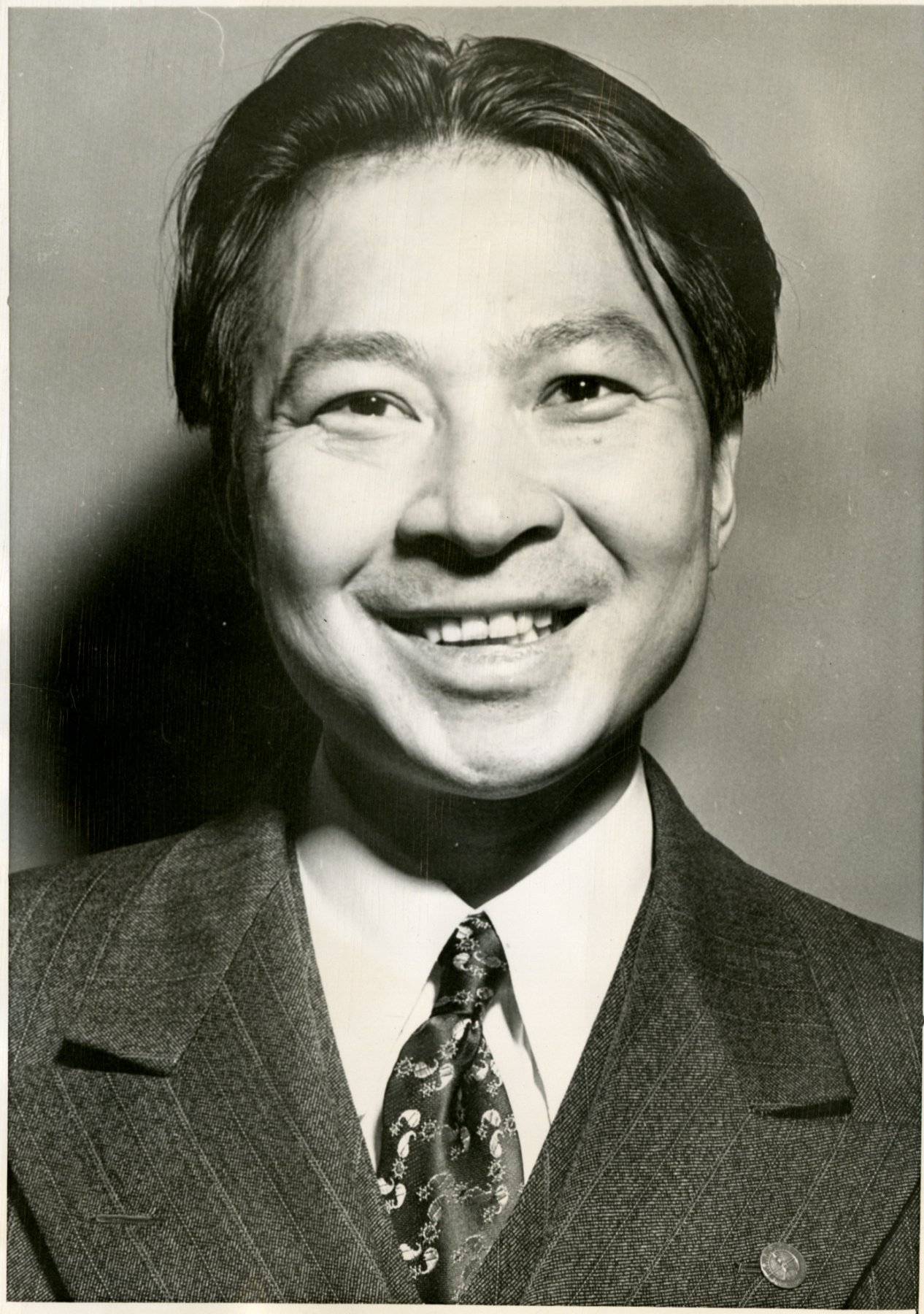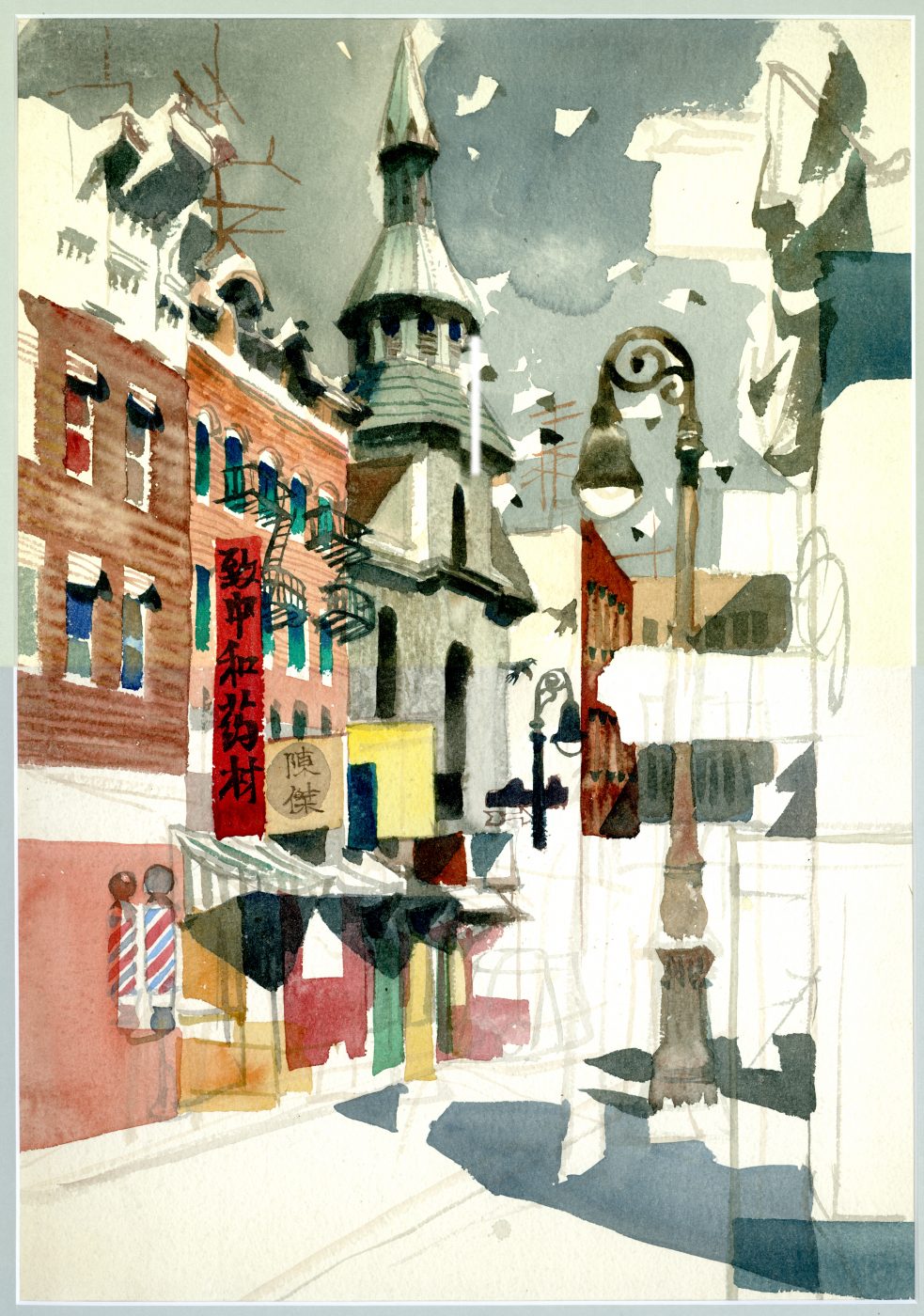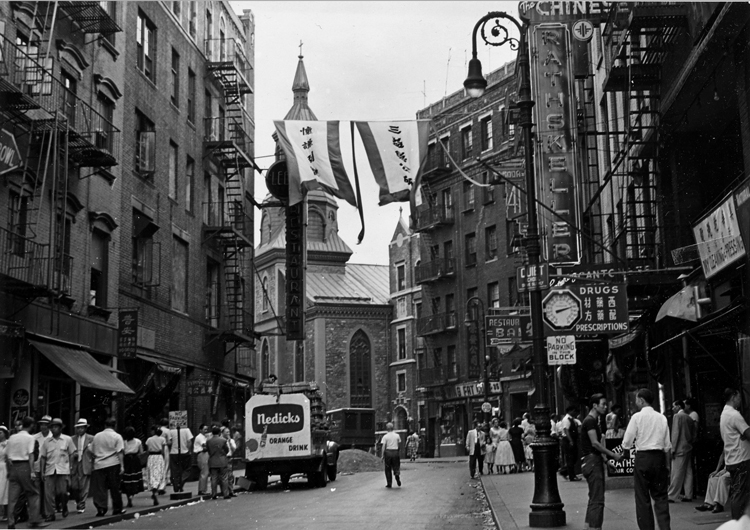
Illustration from “Le Voyageur de Nuit” by Henry Jaques, Courtesy of Alex Jay, Museum of Chinese in America (MOCA) Collection.
Henry Jaques的“Le Voyageur de Nuit”插图,Alex Jay捐赠,美国华人博物馆(MOCA)馆藏
Yun Gee (1906-1963) was a Chinese American modernist artist born in Guangdong. He is considered one of the most daring avant-garde painters of the era. At the age of 15, Gee moved to San Francisco as a paper son to live with his merchant father. There, he would train in painting and drawing at the California School of Fine Arts with Otis Oldfield, who introduced him to the French artistic movement of Synchromism, a style that analogized color to music. Unlike his French contemporaries, who were blending Cezanne’s systems of space and Matisse’s use of color to create purely abstract works, Gee was the only painter of his time to masterfully translate Synchromism’s color blocks into figurative painting.
Gee surrounded himself with avant-garde artists in San Francisco, establishing the Modern Gallery in 1926 and the Chinese Revolutionary Artists’ Club, where he taught young Chinese painters technique and color theory. Gee experienced a period of great growth and development while working in Paris, away from the racial prejudices that plagued the U.S. during Chinese Exclusion. After moving to New York in 1930, Gee exhibited at the Brooklyn Museum and the MOMA but found the racial discrimination he faced unbearable. He would move back to Paris briefly before being forced to return to New York at the onset of World War II. While racism remained a constant obstacle to the recognition of Gee’s genius, his daring work continues to be rediscovered and appreciated for its mastery today.


